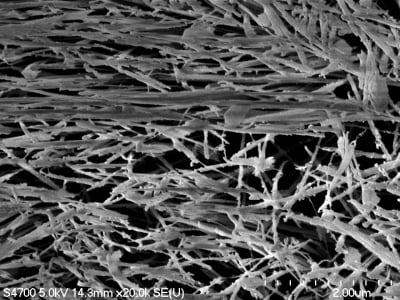(JILA’s Comb Breathalyzer Is Now a Thousandfold More Sensitive to Disease Biomarkers)
2021-10-04 アメリカ合衆国・国立標準技術研究所(NIST)
・ NIST とコロラド大学ボールダー校による共同研究所の JILA(宇宙物理学複合研究所(Joint Institute for Laboratory Astrophysics) が、2008 年に開発・実証した周波数コムブレサライザー(呼気分析装置)のプロトタイプを改良。COVID-19 検出の可能性をきっかけに医療アプリケーションでの実用化に向けてさらなる進展を目指す。
・ 今回、検出感度を 1,000 倍向上し、検出可能なバイオマーカーを 4 種類に拡大。ポータブルな設計で疾病を検出・モニタリングするリアルタイムの非侵襲的な呼気分析技術を提供する。
・ 同コムシステムは、ガラス管内で呼気サンプル中を往来するレーザー周波数コムの吸収する色と光の量を計測し、化学物質の「フィンガープリント(指紋)」を特定する。
・ 分析対象の光スペクトルを近赤外域からより多くの分子が光を吸収する中赤外域に拡張し、光コーティングやその他複数の技術の高度化により、検出感度を ppt レベルまで向上させた。
・ 同コムシステムでは、呼気中のメタノール(CH3OH)、メタン(CH4)、水(H2O)および重水(HDO)の 4 種類のバイオマーカーの検出とモニタリングに成功。例えばメタンは腸の健康状態の指標となる。
・ 同様のコムシステムで、検出可能な化学物質にホルムアルデヒド、エタン、硫化カルボニル、エチレン、二硫化炭素およびアンモニアの 6 種類を追加することもできる。また、コムーレーザーを赤外域に拡張して検出能力を飛躍的に向上させることで、呼気に含まれる数百種類もの微量な化学物質の同定も可能となる。
・ 現在普及している呼気分析技術は、ガスクロマトグラフィーと質量分析法を組合せたもので、数百種類の分子を検出できるが動作が遅く数十分を要する。米国 FDA(食品医療品局)が認可するオプティカル呼気検査の多くで検出可能な化学物質は 1 種類のみ。
・ 呼気分析は周波数コムの主要な医療アプリケーション。化学試薬や研究設備を不要とし、広大なスペクトル範囲、高分解能と高感度を提供し、数十種類の化学物質の同時検出の可能性が期待できる。現在小型のブレサライザーを構築中。
・ 本研究には、米国空軍科学研究局(AFOSR)、米国立科学財団(NSF)および NIST が資金を提供した。
URL: https://www.nist.gov/news-events/news/2021/10/jilas-comb-breathalyzer-now-thousandfold-more-sensitive-disease-biomarkers
<NEDO海外技術情報より>
(関連情報)
米国科学アカデミー紀要(PNAS)掲載論文(アブストラクトのみ:全文は有料)
Ultrasensitive multispecies spectroscopic breath analysis for real-time health monitoring and
diagnostics
URL: https://www.pnas.org/content/118/40/e2105063118
Abstract
Breath analysis enables rapid, noninvasive diagnostics, as well as long-term monitoring of human health, through the identification and quantification of exhaled biomarkers. Here, we demonstrate the remarkable capabilities of mid-infrared (mid-IR) cavity-enhanced direct-frequency comb spectroscopy (CE-DFCS) applied to breath analysis. We simultaneously detect and monitor as a function of time four breath biomarkers—CH3CH3OH, CH4CH4, H2H2O, and HDO—as well as illustrate the feasibility of detecting at least six more (H2H2CO, C2H6C2H6, OCS, C2H4C2H4, CS2CS2, and NH3NH3) without modifications to the experimental apparatus. We achieve ultrahigh detection sensitivity at the parts-per-trillion level. This is made possible by the combination of the broadband spectral coverage of a frequency comb, the high spectral resolution afforded by the individual comb teeth, and the sensitivity enhancement resulting from a high-finesse cavity. Exploiting recent advances in frequency comb, optical coating, and photodetector technologies, we can access a large variety of biomarkers with strong carbon–hydrogen-bond spectral signatures in the mid-IR.



